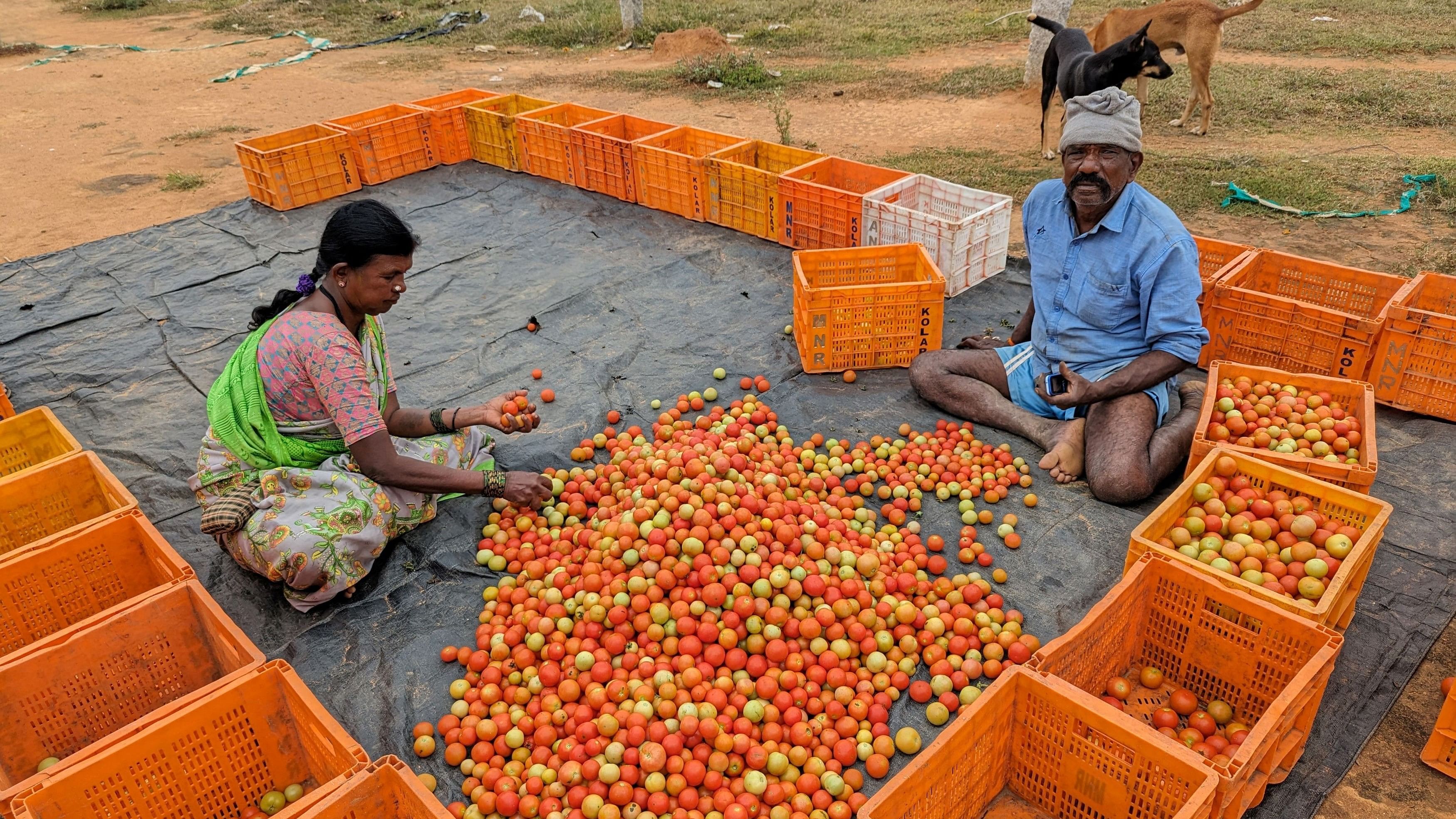
Venkatramappa, 70, a farmer, and his wife sort through their mosaic virus-impacted tomato harvest, in Kolar district, in the southern state of Karnataka, India, July 24, 2023.
Credit: Reuters Photo
With tomato prices soaring this season, the demand for tomato seedlings has surged as farmers hope to make windfall gains in the next few months. While both government and private nurseries are struggling to meet the demand, which has almost doubled, the price of seedlings has also gone up by about 25%. But the big question is whether the growers will really reap rich dividends or end up in huge losses as such agricultural practices which are not backed by scientific forecast usually lead to a market glut.
Tomato is grown as a rabi crop in parts of Maharashtra, Karnataka and Andhra Pradesh, and the yield comes to the market between March and August. After August, the kharif crop from Uttar Pradesh, Nashik in Maharashtra and other parts of the country reaches the market. Normally, farmers rotate crops to ensure a continuous supply of tomatoes to the market.
This year, the sudden crash in wholesale prices, which fell to Rs 5-10 per kg around March and April, forced many farmers to abandon tomato cultivation. But then suddenly, it rose to 150-200 per kg, with pests and the heat wave, among other factors, playing a role. Whenever an event like this occurs, it is common for farmers to shift en masse to such crops, leading to production much beyond the market demand. Soon, the price rise turns into a price crash. This cycle has been operating for years.
In Karnataka, tomato is grown mainly in Chikkaballapura, Mandya, Tumakuru, Chitradurga, Koppal and Haveri. The horticulture department, which has decided to distribute millions of seedlings to meet the current demand, could actually be contributing to an impending crisis due to the possibility of over-production. In India, the cropping pattern is influenced by various factors such as soil, rainfall, temperature and weather conditions. Cropping pattern is a dynamic concept and usually refers to the proportion of area under various crops at a given point of time. With technological advances, the cropping pattern should be determined based on weather forecasts and market intelligence. But with governments failing to play a proactive role, farmers are forced to take uninformed decisions.
A possible market glut of tomatoes in the next season, or for that matter of any other crop, is completely avoidable if the Karnataka government issues an advisory on what crops farmers should grow in different areas, considering various factors, including the deficit rainfall in many parts of the state, the weather forecast and the likely demand for various agricultural products. Unless farmers receive timely guidance on these matters, they will continue to adopt unscientific practices, to their own detriment.